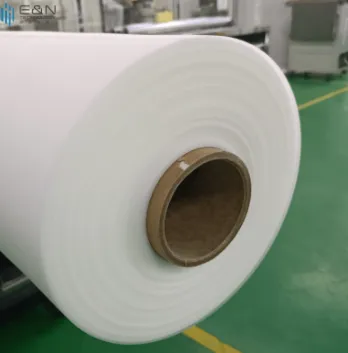The interlayer film is a thin, transparent sheet of material used in the manufacturing process of laminated glass. The interlayer film is sandwiched between two or more layers of glass and bonding them together under heat and pressure.
The film provides additional strength, safety, and security to the glass. In the event of an impact, the interlayer film holds the glass together, preventing it from shattering into dangerous shards.
The interlayer film plays an important role in glass processing, particularly in laminated glass
production.

Glass processing involves various techniques to modify the properties and characteristics of glass.
Depending upon the type of glass being processed and the use of the final product, the glass manufacturing process can vary, but here are some general steps involved:
The raw materials used in glass production are usually silica sand, soda ash, limestone, and cullet. These materials are crushed, washed, and screened to remove impurities.
The glass is first cut to the desired size and shape using specialized cutting tools such as diamond-tipped blades or waterjet cutters.
The edges of the glass are then ground and polished to smooth out any rough edges and give the glass a polished finish. This is typically done using machines that use diamond abrasives to grind and polish the glass.
Tempering is a heat treatment process that strengthens the glass and makes it more resistant to thermal stress. The glass is melted at high temperature to cooled down quickly. It causes the surface of the glass to compress and the interior to remain in tension.
Laminating is bonding multiple layers of glass together using a special adhesive. This is often done for safety glass, where a plastic layer is used to bond two or more layers of glass.
Glass can also be coated with a thin layer to enhance its properties, such as improving energy efficiency or reducing glare. The coating can be done using vacuum deposition or spray coating techniques.
Etching involves using acids or other chemicals for the surface design of the processed glass. This can be done using a stencil or freehand and can be used for decorative or functional purposes.
Glass processing is a complex and highly technical process that requires specialized knowledge and equipment. Producing high-quality glass in glass processing is critical and meets its intended application requirements. You can contact our team to get our services and order any products you want.